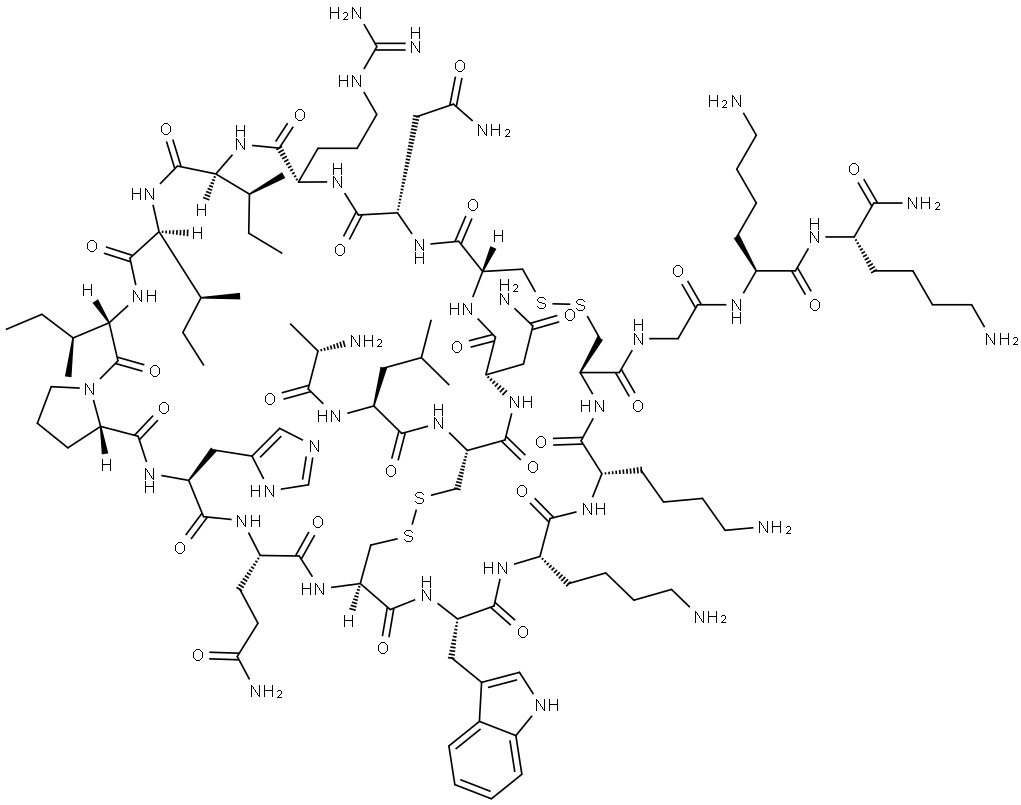托肽品 Q

托肽品 Q 用途与合成方法
Potassium channel
Tertiapin-Q is a highly selective blocker of G protein-coupled inwardly rectifying potassium (GIRK1/4) heterodimer and renal outer medullary potassium channel (ROMK1, Kir 1.1 ). Tertiapin-Q is a potent and selective blocker for Kir 1.1 renal outer medullary potassium, Kir 3.1 -Kir 3.4 channels and calcium activated large conductance potassium channels (big potassium channels). The somatostatin (SS-14)-activated current is almost completely blocked (93.2±2.9%, n=5; P<0.01) by preincubation with the G protein-coupled inwardly rectifying potassium (GIRK) channel blocker Tertiapin-Q (TPN-Q).
Tertiapin-Q is a muscarinic acetylcholine receptor-operated K + current (I K,Ach ) blocker. After the cessation of rapid atrial pacing, the atrial effective refractory period (AERP) is unchanged during the experimental period in the rapid atrial pacing (RAP) rabbits (n=6). Bepridil (1 mg/kg, n=5 for each group), Amiodarone (10 mg/kg, n=5 for each group), Vernakalant (3 mg/kg, n=5 for each group), Ranolazine (10 mg/kg, n=6 for each group) or Tertiapin-Q (0.03 mg/kg, n=5 for each group) on the AERP in the control and RAP rabbits. Tertiapin-Q significantly prolongs the AERP at each pacing cycle length both in the control and RAP rabbits. The extents of prolonging effect of Tertiapin-Q on the AERP in the RAP rabbits are greater than those in the control animals.

